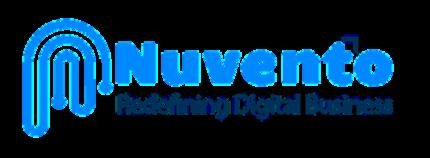Cloud-based studentEHR Solution

In order to guarantee that kids at schools receive sufficient healthcare, an electronic health record (EHR) system is essential. The electronic health record system may be used by school nurses to gather,monitor,andmanagedataaboutstudents' medical conditions. The school is able to give its kids the best medical treatment possible because of the digitisation of health records utilising EHR technology. Additionally, it lessens paperwork and facilitates school nurses ' ability to look after the health of all pupils. With the aid of Nuvento's cloud solutions, a well-known EHR programme utilised in schoolsacrosstheUSstarteditscloudadventure


THE CHALLENGE
Until the pandemic, a SharePoint-based EHR application was sufficienttostorestudenthealthinformationatschools.Likethe rest of the globe, the majority of schools were unprepared for COVID-19.Itdemonstratedtheimportanceofstayinguptodate withtechnologyinordertoassurestudentwell beingandmake promptinterventions.

When the schools reopened in the midst of the epidemic, the company wanted to be prepared by updating the EHR programme.Nuvento'scloudteammodernisedtheplatformby creating a SAAS application in the cloud. The work involved developingtheprogrammeonthecloud,transferringthecurrent databases,andupdatingtheapplicationwithnewfeaturesand functionalities.

SOLUTION
Nuvento's cloud specialists recommended a multitenant SAAS solution for the EHR software with Azure cloud after evaluating severalvariablesincludingaffordability,security,efficiency,and compatibility.ThiswasthegreatestoptionbecauseAzureused most of the standard concepts and technological frameworks neededbytheEHRapplication. The migration is made simple by the readymade services, including APIs and templates, flexible environment, and interoperabilitywithMicrosoftframeworks.


Someofthecapabilitiesof Azureusedfordevelopingthe applicationinclude:
We could construct the programme using Azure Web App without incurring the cost of deploying, configuring, and maintaining separate virtual machines. The Web Application Firewall (WAF) in Azure API Gateway protects the application from typical vulnerabilities. Continuous integration and continuous deployment with Azure DevOps enable quicker and near-zero-downtimedeployments.
Azure features applications enable the incorporation of functionality such as processing parent requests, facilitating parent-nurse contact, scheduling duties, and so on. The nurses and parents' logins are included in the authentication and accessibility levels. MongoDB collectionsandAzureBlobstorageareusedtostoredatathatcanscaleoutifneeded.

KEY OUTCOMES
The most significant advantage of migrating from on-premises to Azure is the application's increased availability and scalability. It is simple to accommodate growth and extend worldwide becausetheEHRapplicationishostedontheAzurecloud. In terms of speed, responsiveness, usability, and user experience, performancehasconsiderablyimproved.


AverageResponseTimeoftheapplicationisaround58.57milliseconds. The application is accessible at all times and from any location with a high availability of 99.8%. Automatic scalability of around 80% lets the app scale-out new instances dynamically if theloadincreases. DuetoseamlessdatamanagementandstreamlinedconnectionwiththeEHRsoftwareon Azurecloud,theproductivityofthenurseshasincreasedby20%. Security and Compliance features of Azure provide an added level of security to the app, data,network,andinfrastructurebytakingcareofallvulnerabilities. On-demand customization of features and easy online integration of additional modules, suchascovidtracking,arepossible. Costofoperationhasbeenoptimizedtopayonlyforwhattheyuseandsavedabout25% oftheexpenditurecomparedtoon-premises





